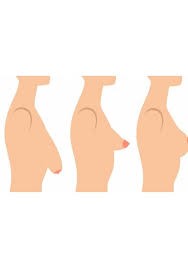Reconstructive surgeries is all about
Reconstructive surgery is performed on abnormal structures of the body, caused by congenital defects, developmental abnormalities, trauma, infection, tumours or disease. It is performed to improve functions, but may also be done to approximate a normal appearance.
Reconstructive surgery is generally covered by most health insurance policies, although coverage for specific procedures and levels of coverage may vary greatly.
From the top of the head to the tip of the toe, and from newborn babies to the very elderly, reconstructive surgery is used to treat a wide range of conditions.
Reconstructive surgery is all about repairing people and restoring function. It is performed to repair and reshape bodily structures affected by birth defects, developmental abnormalities, trauma/injuries, infections, tumours and disease.
Using a wide range of reconstructive techniques, plastic surgeons mend holes and repair damage primarily through the transfer of tissue from one part of the body to another. Their main aim is to restore the body, or the function of a specific part of the body, to normal.
However, plastic surgeons carrying out reconstructive surgery also try to improve and restore appearance. Wherever possible they attempt to minimise the visual impact of the initial wound or defect, and the impact of the surgery itself.
Cosmetic surgery is an extension of reconstructive surgery in which the main functional gain to be expected is an improvement in appearance.
What is breast reconstruction?
The goal of breast reconstruction is to restore one or both breasts to near normal shape, appearance, symmetry and size following mastectomy, lumpectomy or congenital deformities.
Breast reconstruction often involves multiple procedures performed in stages and can either begin at the time of mastectomy or be delayed until a later date.
Breast reconstruction generally falls into two categories: implant-based reconstruction or flap reconstruction. Implant reconstruction relies on breast implants to help form a new breast mound. Flap (or autologous) reconstruction uses the patient’s own tissue from another part of the body to form a new breast.
There are a number of factors that should be taken into consideration when choosing which option is best:
- Type of mastectomy
- Cancer treatments
- Patient’s body type
Breast Implant Problems
Women with problems related to breast implants also occasionally seek out breast reconstruction with their body’s own tissue. These are often patients who have had breast implants placed for breast reconstruction following breast cancer treatment, or sometimes women having some problem with implants placed for cosmetic breast augmentation.
Types of Breast Reconstruction
There are many different reconstruction techniques available. Your healthcare team can talk to you about the options that may be right for you, but it’s in your best interest to do your own research, too. If you know someone else who had reconstruction, you might find it helpful to talk to her about her decision process, her doctors, and her satisfaction with the results.
There are two main techniques for reconstructing your breast:
Implant reconstruction: Inserting an implant that’s filled with salt water ( saline), silicone gel, or a combination of the two.
saline), silicone gel, or a combination of the two.
Autologous or “flap” reconstruction: Using tissue transplanted from another part of your body (such as your belly, thigh, or back). Antilogous reconstruction also may include an implant.
Breast reconstruction procedure steps
A breast reconstruction procedure includes the following steps:
Step 1 – Anaesthesia
Medications are administered for your comfort during the surgical procedure. The choices include intravenous sedation and general aesthesia. Your doctor will recommend the best choice for you.
Step 2 – Flap techniques reposition a woman’s own tissue to create or cover the breast mound
Sometimes a mastectomy or radiation therapy will leave insufficient tissue on the chest wall to cover and support a breast implant. In these cases, breast reconstruction usually requires either a flap technique or tissue expansion.
A TRAM flap uses donor muscle, fat and skin from a woman’s lower abdomen to reconstruct the breast. The flap may either remain attached to the original blood supply and be tunnelled up through the chest wall, or be completely detached, and formed into a breast mound.
Alternatively, your surgeon may choose the DIEP flap or SIEA flap techniques, which do not use abdominal muscle but transfer only skin and fat to the chest from the abdomen. If there is insufficient tissue on the lower abdomen, other donor sites such as the buttocks or thighs may be selected (SGAP flap, TUG flap, PAP flap)
A latissimus dorsi flap uses muscle; fat and skin from the back tunnelled to the mastectomy site and remains attached to its donor site, leaving blood supply intact.
Occasionally, the flap can reconstruct a complete breast mound, but often the latissimus flap provides the muscle and tissue necessary to cover and support a breast implant.
Step 3 – Tissue expansion stretches healthy skin to provide coverage for a breast implant
For women who do not require breast radiation and would like to avoid a separate donor site, implant-based reconstruction is an option. Reconstruction with tissue expansion allows an easier recovery than flap procedures, but it can be more lengthy reconstruction pr ocess.
ocess.
It usually requires several office visits over 1-2 months after placement of the expander to gradually fill the device with saline through an internal valve to expand the skin. Newer air-filled devices may allow patient-controlled expansion at home using a remote dosage controller.
A second surgical procedure will be needed to replace the expander if it is not designed to serve as a permanent implant.
Placement of a Breast Implant
Step 4 – Surgical placement of a breast implant creates a breast mound
A breast implant can be an addition or alternative to flap techniques. Surgeons may also use an implant as a temporary placeholder during other breast cancer treatments until you are ready for more involved flap reconstruction techniques. Saline and silicone implants are available for reconstruction.
Your surgeon will help you decide what is best for you. Reconstruction with an implant alone usually requires tissue expansion. Direct-to-implant breast reconstruction may be an option for some women undergoing mastectomy with certain tumour characteristics and breast shapes.
Step 5 – Reconstructing a nipple and areola, breast revision techniques
For women who are not candidates for nipple-sparing mastectomy, breast reconstruction is completed through a variety of techniques that reconstruct the nipple and areola. Techniques usually involve folding skin to create the shape of a nipple followed by tattooing. Three-dimensional nipple-areolar tattooing may be used alone to create the appearance of a realistic nipple with the illusion of projection. Breast reconstruction outcomes can often be enhanced with staged revision procedures that improve symmetry, use liposuction with fat grafting and improve the appearance of the donor site.
What is breast enlargement surgery?
Breast augmentation, or augmentation mammoplasty, is a procedure to reshape the breast with an implant to make it larger. The procedure can also be done to reconstruct the breast following breast surgery.
Possible complications of breast augmentation surgery may include:
- Infection is most common within a week after surgery. The infection can be treated with antibiotics or, in severe cases, the implant is removed for several months until the infection has resolved and a new implant is inserted.
- Capsular contracture. A capsular contracture may occur if the scar or capsule around the implant begins to tighten. This may change the appearance of your breast or, in some cases, cause discomfort. Treatment can involve either the removal or scoring of the scar tissue, or the removal or replacement of the implant.
- Oversensitive, under sensitive or numb nipples. Oversensitivity, under sensitivity, or small patches of numbness near the incisions may occur in some people. The symptoms usually disappear with time, but may be permanent in some people.
Leaking or rupturing of silicone gel or saline implants. Leaking or rupturing of the implant may occur as a result of an injury, or even from the normal compression and movement of the breast and implant.
Rippling of the implant. In thin people, the implant edges can be seen under the skin. It is normal to feel the implant edge at the side and bottom of the breast.
A breast implant is a silicone shell filled with either silicone gel or saline:
Saline-filled implants. If a saline-filled implant breaks, the implant will deflate in a few hours and the saline (salt water) will harmlessly be absorbed by the body.
Gel-filled implants. The leak or rupture of a gel-filled implant can cause one of two things: if the shell breaks but the scar capsule around the implant does not, changes may not be detected; if the scar also breaks or tears, especially following extreme pressure, the silicone gel implant may move into surrounding tissue. The gel may collect in the breast and cause a new scar to form around it, or it may migrate to another area of the body. The shape or firmness of the breast may change. A second operation and replacement of the leaking implant may be necessary. There is no evidence that a ruptured implant will compromise your health.
Each type of implant has advantages and disadvantages. Your doctor will discuss the types of implants with you and help determine which type is best for you.
There is no evidence that pregnancy or the ability to nurse will be affected by breast implants. However, pregnancy and nursing may affect the appearance of your breasts. If you have nursed a baby within the year before breast augmentation, you may produce milk for a few days after surgery. This may cause some discomfort, but can be treated with medicine prescribed by your healthcare provider.
There is no evidence that having an implant in place will make the detection of breast cancer more difficult. You will still need to have mammograms as advised by your healthcare provider. Be sure to inform the mammographic that you have implants in place.
About the procedure
Although each procedure varies, breast augmentation surgeries generally cover the following considerations:
Location options may include:
- Surgeon’s office-based surgical facility
- Outpatient surgery centre
- Hospital outpatient
- Hospital inpatient
Anesthetic options may include:
- General anaesthesia
- Local aesthesia, combined with an intravenous sedative (you can remain awake but relaxed)
Average length of procedure:
- About 1 to 2 hours
Location of incision:
The method of inserting and positioning the implant depends on your anatomy and the surgeon’s recommendation. The incision can be made:
- In the crease where the breast meets the chest
- Around the areola (the dark skin surrounding the nipple)
In the armpit
Working through the incision, the surgeon lifts the breast tissue and skin to create a pocket, either directly behind the breast tissue or underneath the pectoral muscle in the chest wall. The implants are cantered beneath the nipples.
Recovery period:
When the dressings are removed, you may be given a surgical bra. Stitches will be removed in a week or so. Your surgeon will instruct you about the need to wear a bra and activity restrictions.
What is breast reduction surgery?
Breast reduction, also known as reduction mammaplasty, is a procedure to remove excess breast fat, glandular tissue and skin to achieve a breast size in proportion with your body and to alleviate the discomfort associated with overly large breasts.
Breast reduction costs may include:
- Anaesthesia fees
- Hospital or surgical facility costs
- Medical tests
- Post-surgery garments
- Prescriptions for medications
- Surgeon’s fee
When choosing a board-certified plastic surgeon for breast reduction, remember that the surgeon’s experience and your comfort with him or her are just as important as the final breast reduction costs.
